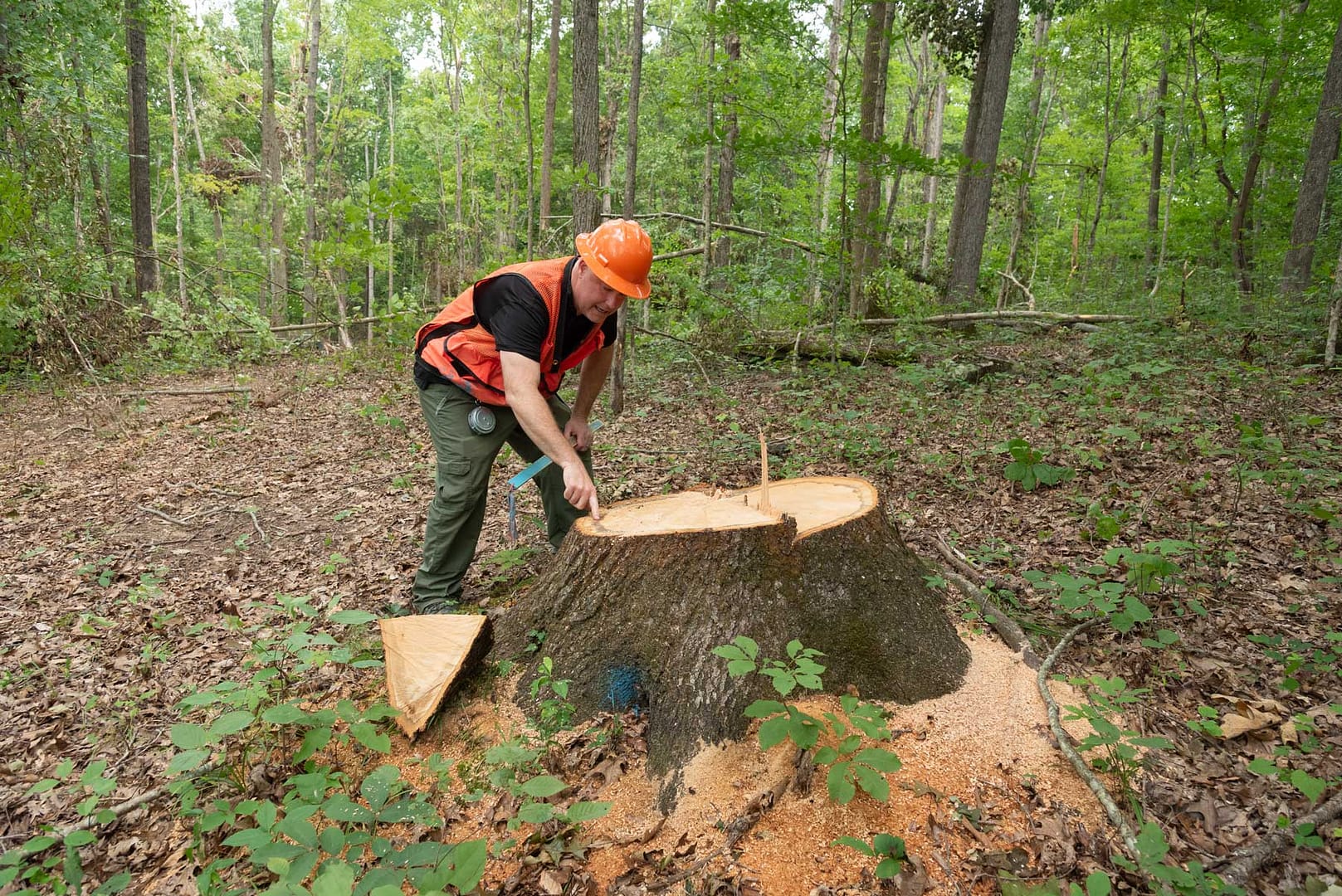Helping you become a better steward of your forestlands.
Frequently Asked Questions
How many acres of timber do I need to sell my trees?
No two tracts of timber are the same. There are many factors involved to determine if your timber is salable or not. Location of the forest, past harvesting practices, forest density, species composition, and size of trees are just a few determining factors. Most timber harvesting operations are contracted with the logging company, they have upfront investments (labor, equipment, hauling costs, etc.), so it needs to be worth their while. So, a small tract with many large trees could warrant a harvest, whereas a large tract that has been recently harvested may not. Cumberland Forest Management works for the landowner to ensure a fair price and sustainable harvesting practices are carried out no matter the size of the property.
Why should I hire a forester?
It is very important to involve a knowledgeable and qualified forester at the very beginning of a timber harvest. This protects the property owner (who may not realize the true value of their trees) from being taken advantage of. The forester is experienced in written contracts, that protect the landowner’s interests. A forester can also make sure the harvest is conducted in a manner that ensures the integrity of the woodland is protected for the future.
How much money can I make from selling my timber?
How much a property owner can expect to make from harvesting their timber depends on several factors, such as size of the property, market value of the available tree species, location, and more. Again, this is where hiring a Forester at the beginning of a timber project is important. An initial consultation can get a rough idea of what a project could yield.
How Much does it cost to hire a Forester?
It really depends on the services required. For complete management of a timber harvest project, CFM typically works on a percentage of the final harvest, so there is no upfront cost to the landowner. We would be happy to discuss your project with no obligation.
Is harvesting timber bad for the environment? Climate?
No, if it’s done correctly. In fact, harvesting can be beneficial in several ways. Trees are great natural sponges of carbon dioxide (CO2), one of the main “greenhouse” gasses that has increased rapidly in recent years and contributes to climate change. Older, larger trees do not absorb as much CO2 as young, fast-growing trees. Additionally, when a tree dies naturally, the CO2 absorbed during its life is released back into the atmosphere when it decays. You can learn more in this article.
How long does it take for a forest to regrow after a harvest?
Many of the deciduous hardwood trees in Kentucky and Tennessee take approximately 60-80 years to reach their merchantable maturity. Selective tree harvesting makes sure that not all trees are cut, leaving a balance of species and size classes to repopulate and continue to mature. A variety of factors specific to any location will affect this question.
